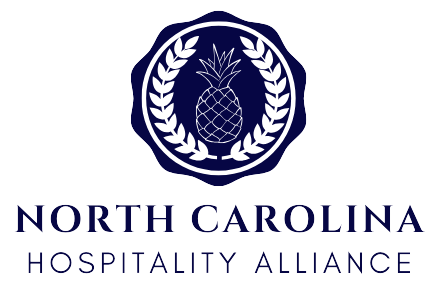First in Tourism: An Inside Look at North Carolina’s $36 Billion Tourism Sector
06.10.2025 | TRC Nexus
Thank you for joining us this Saturday morning in early June – the time of year North Carolina’s peak tourism season is about to get into full swing.
North Carolina consistently ranks among the best places to do business in the country. But we also rank among the top-five most-visited states, clocking in at just under 40 million tourists last year (even despite Hurricane Helene’s destruction of western North Carolina’s fall tourism season).
Our state boasts tourism attractions for just about every kind of traveler – those who prefer the outdoor adventure of the mountains, the relaxation of the sun-soaked beach, or the excitement of bustling urban centers. As one might expect, as North Carolina’s attractiveness to employers and families has grown, so too has its allure to tourists.
What are the true impacts of travel and tourism on the economy? We dive into the numbers below.
***
Visit NC, a project of the Economic Development Partnership of North Carolina (EDPNC), estimates domestic and international travelers contributed $36.7 billion to the North Carolina economy last year.
That’s a substantial sum, and it supports a large and growing travel and tourism-centered business sector. From high schoolers who push Italian Ice carts up Carolina Beach to sophisticated restaurateurs who operate fine dining establishments in Asheville, direct tourism employment eclipsed 230,000 people last year.
According to Visit NC, the five most popular activities for overnight vacationers last year were visiting friends/relatives, shopping, going to the beach, visiting historic sites, and fine dining. The vast majority, around 80%, of visitors traveled here by car, and overnighters were almost evenly split between hotels and rental or private homes.
As impactful as the statewide economic benefits, though, are the local taxes that travel and tourism spending generate. Two hundred counties and municipalities in North Carolina collect revenue from hotel occupancy taxes – levies on overnight stays that range from 1% to 8%. Tourism-related taxes bring in more than $200 million to local governments every year.
Local governments generally use that tax revenue to support attracting even more tourists to their jurisdictions, either through marketing campaigns or capital projects. Wake County, for example, is using tourism tax revenue to finance improvements to the Lenovo Center. With arena enhancements already in motion, Carolina Hurricanes owner Tom Dundon also plans to develop the surrounding area, likely attracting even more people who will contribute to the tourism tax base.
But this virtuous cycle of tourism yielding economic impact and tax collections, which in turn prompts yet more tourism, was brutally interrupted in western North Carolina last year. With entire towns destroyed and major roadways closed for weeks or months, travel to the western part of the state was impossible.
The true impact to the western North Carolina tourism economy isn’t fully known, in part because the effects still linger. The region has had only two real tourism “event” weekends since the disaster: Easter and Memorial Day weekend. A recent venture to western North Carolina by a TRC Nexus correspondent found a hopeful scene, though: restaurants, some of which only recently reopened, were full to the brim with paying customers.
***
Despite the near-universal support of tourism generally – who wouldn’t want travelers to spend their money here instead of another state? – flashpoints do exist. School calendars represent fertile ground for a recurring policy quarrel.
Some school districts prefer the convenience of a school year that begins in early August and ends in May. But this window cuts into North Carolina’s peak tourism season, which runs through Labor Day. That restricts both demand – fewer families travel to the beach or the mountains – and the labor supply, as high schoolers can’t man theme park attractions or lifeguard chairs if they’re in a classroom.
Earlier this year, the North Carolina Senate advanced what legislators billed as a final compromise, allowing schools to slightly alter their calendars and finally put the controversy to bed. It has not yet passed out of the full legislature, and prospects remain uncertain.
As we look ahead to another peak travel season, North Carolina’s growing tourism economy seems far more sweeping than a mere seasonal boost – it is a foundational part of our state’s economy, culture, and identity. From mountain towns sporting multicolored leaves to bustling beach communities welcoming summer travelers, tourism touches every corner of North Carolina.
